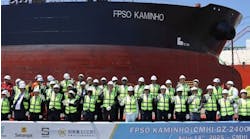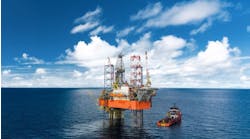Offshore staff
LONDON -- Oil & Gas UK and NATS Services (NSL) have launched a new helicopter surveillance system for the North Sea. The new system enables air traffic controllers to see helicopters on their radar screens at Aberdeen Airport at a greater range from the shore than has previously been possible using shore-based radars. Using this new system will further reduce the risk of near miss incidents with other aircraft and increase the speed and efficiency of search and rescue operations, the companies say.
Previously, helicopters were lost to land-based radar at about 80 mi (129 km) from the coast. The new system uses multilateration to allow flight paths to be tracked all the way to an installation in real time. It is designed to detect aircraft down to 500 ft (152 m) above sea level or better, depending on the helicopter position.
Multilateration uses multiple position points to determine the exact location of a helicopter. To provide maximum coverage, equipment is being fitted to 16 host platforms, which have been divided into four clusters each of four platforms. As soon as a helicopter leaves the 80-mi (129-km) radar zone, its transponder responds to a signal which is then detected by receivers on each of the four platforms in a cluster, allowing complete surveillance of the helicopter flight. This data is then sent to the control tower building (CTB) at Aberdeen Airport via the oil company data links. Computer analysis at the CTB determines the helicopter position by triangulation. Only three signals need to be received in order to provide a position, but the fourth signal both increases accuracy and gives some redundancy should a signal not be received.
Three of the four clusters are now completed and flight trials have begun to ensure the coverage is complete from these three clusters and that the system accuracy is within the expected limits. Phase two of the flight trials is due to start in January 2010, with all four clusters expected to be fully operational by June 2010.
09/08/2009


